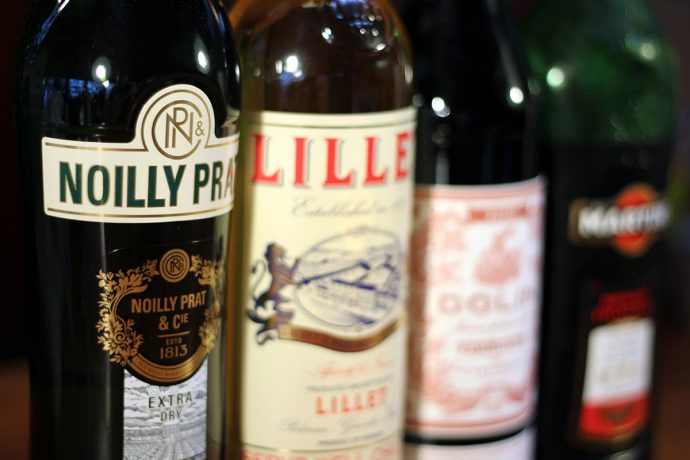Vermouth can be a weird and confusing category for people who aren’t familiar with it. We’ve all heard the pontifications of Martini snobs, who insist that the bartender simply “glance disapprovingly at a bottle of vermouth” while they mix their drink. All they want is cold gin in a glass, with none of that Continental nonsense mucking it up.
Those people are, generally, idiots. Vermouth is a hugely complex and diverse category, with hundreds of years of history stretching back to 18th-century Italy—and most importantly, it can be absolutely delicious.
Unfortunately, though, vermouth still has a pretty bad rap here in the United States. That’s changing, thanks to the efforts of bars across the country that are bringing it back to the forefront, but there’s still a lot of misinformation about what vermouth actually is.
So, in the hopes of remedying some of that stigma, here’s the rundown.
What Is Vermouth?
Vermouth, much like sherry or port, is what’s known as a fortified wine. Basically, that means it’s a wine that has been blended with a distilled spirit (either brandy or a neutral grain spirit) to bump up the proof. This also has a nice side-effect of making it last quite a bit longer after opening than a normal bottle of wine.
In addition to fortification, though, vermouth also undergoes a second step: the addition of botanicals (herbs, spices, barks, roots, and all kinds of other flavorful stuff) to give each variety a unique flavor and aromatic profile. This is why it’s also known as an aromatized wine. Those botanicals are closely-guarded trade secrets for most brands, but they tend to have some overlap with gin botanicals like juniper, citrus peel, coriander, and cloves.
Vermouth almost always uses a white wine as the base, even if the end product ends up being a deep red—the color comes from the botanicals and caramel coloring. It’s usually bottled between 16-18% ABV, making it somewhat stronger than a standard wine.
In Europe, vermouth is usually served before meals as an aperitif, a low-alcohol drink meant to stimulate the appetite. It can be served neat, on the rocks, mixed with soda or tonic, or used in any number of vermouth cocktails.
What Are the Different Styles of Vermouth?
Most vermouths fall into one of two categories, sweet or dry. Sweet vermouth—usually red in color—is historically associated with Italy, while dry vermouth—usually a light gold color—is historically associated with France. That said, both varieties are produced all over the world, and most brands make several different products.
Now, when shopping for vermouth, you’ll probably come across more than just two styles. Categorizing everything as sweet or dry is a useful distinction, but it ignores some of the more subtle variations. We’ll get into those in another article (as there are far too many to list here), but they depend heavily on the country of origin and the botanicals used.
The important takeaway is that if you’ve tried vermouth before and didn’t like it, don’t write off the category as a whole. The diversity of vermouth is really quite impressive, and there’s usually something for everyone.
How to Drink Vermouth
As we said above, many vermouths are great simply neat, on the rocks, or mixed with some soda. However, if you’re still a little hesitant, there are countless classic cocktails that put it to good use.
A perennial favorite is, of course, the Martini. While the prevailing narrative says you should use as little dry vermouth as possible, many of today’s bartenders are bucking that trend and serving their standard Martinis with about a quarter to a half ounce of the stuff. Some are even going as far as the Fifty-Fifty Martini, which uses equal parts vermouth and gin.
For whiskey drinkers, there’s always the Manhattan. Some Manhattan recipes call for as little as a quarter ounce of sweet vermouth, but we’ve found that three-quarters of an ounce makes for a much more balanced drink. As always, you should experiment, but somewhere in the range of a half-ounce to one ounce should do the trick.
And if you’re looking to stick with something a little lower in alcohol content, the Adonis cocktail is a long-lost drink that blends oloroso sherry, sweet vermouth, and bitters to show off the best parts of each.
Photo: Will Shenton, Bevvy



